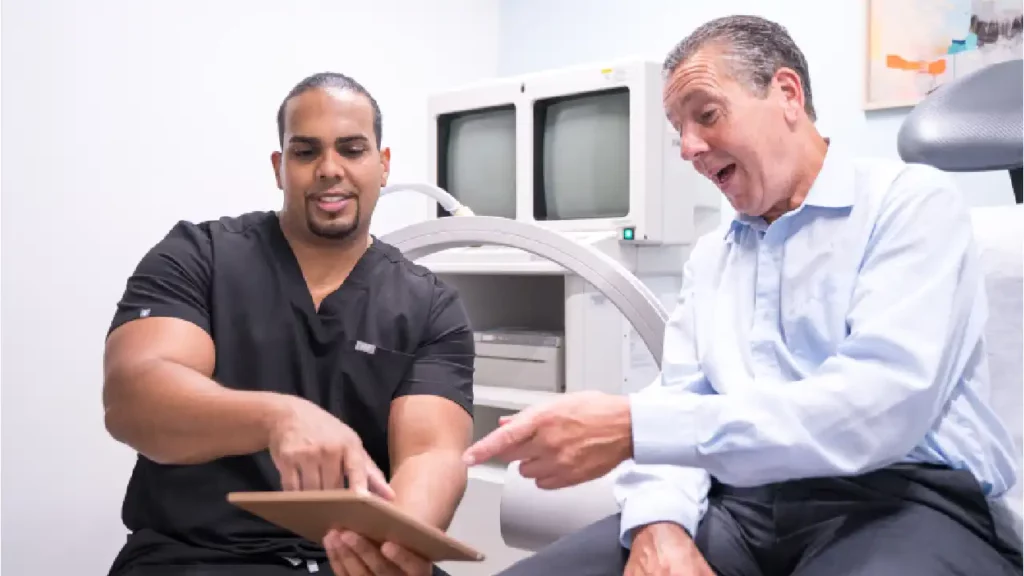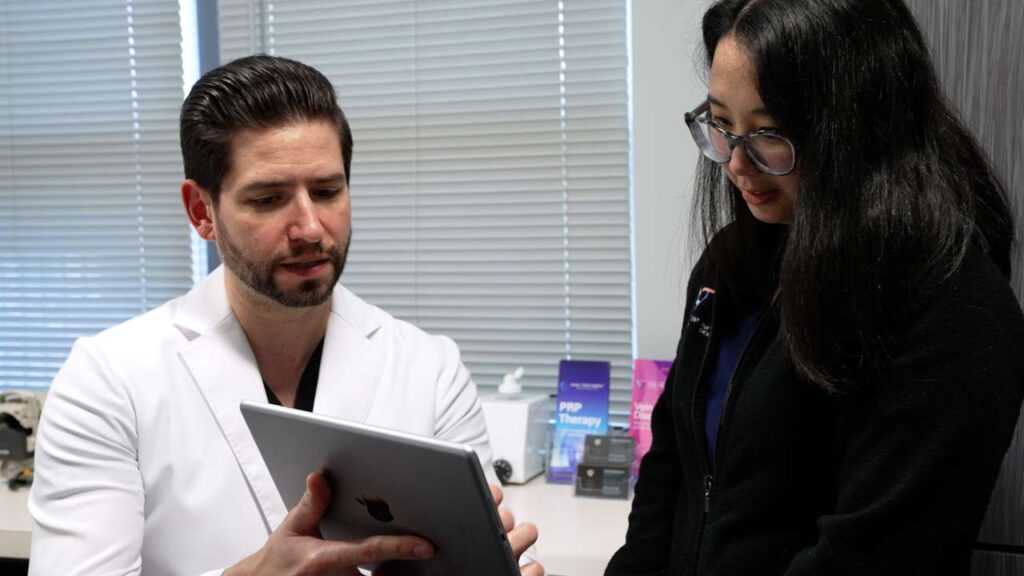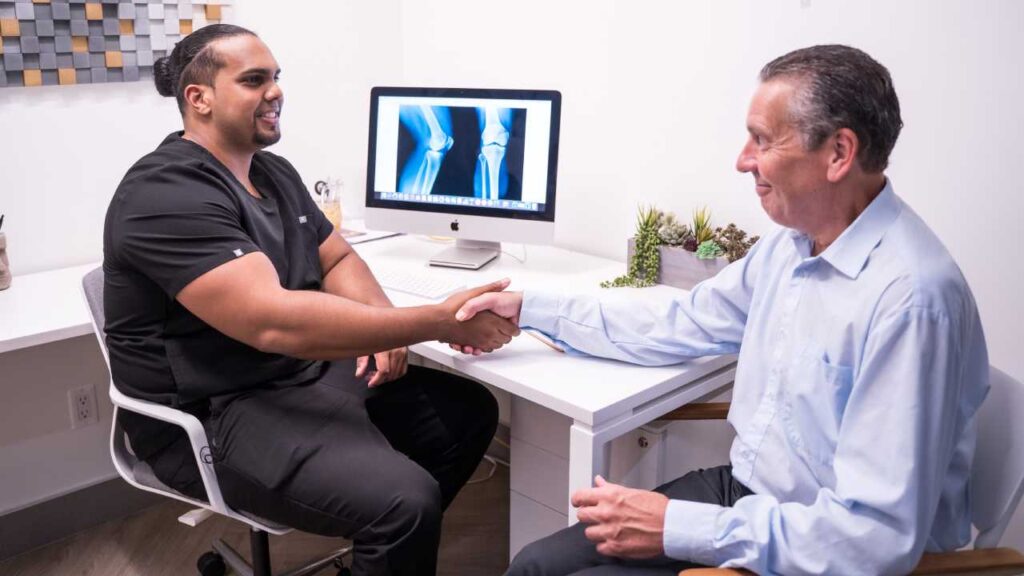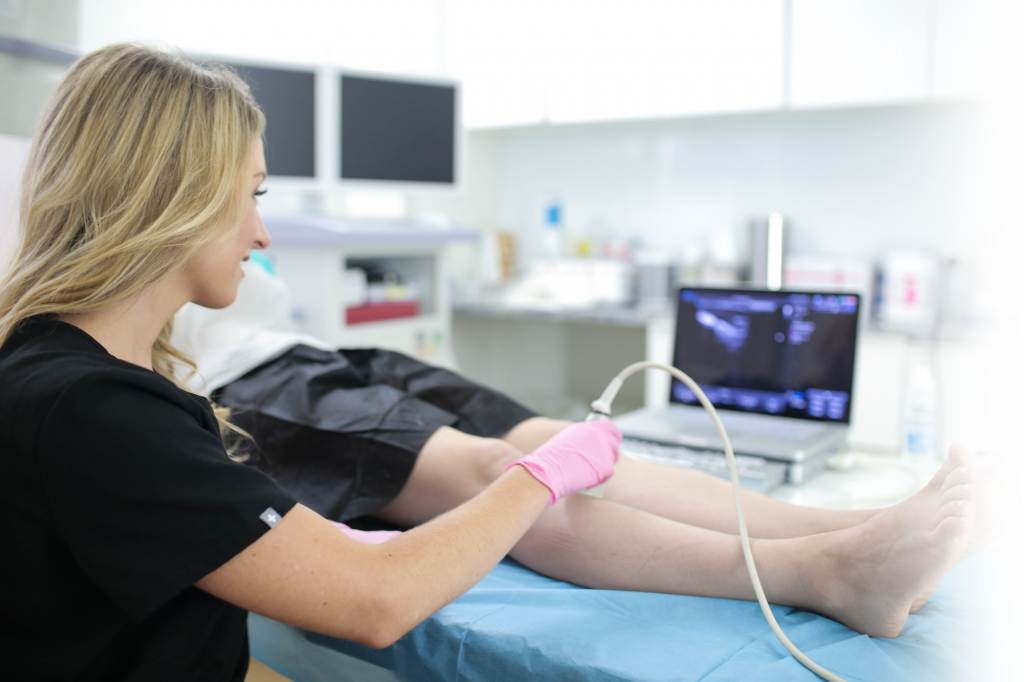What Is Vein Ablation and How Long Does It Take?
Ablating a vein is the process of sealing it off so that blood cannot enter it. This is done to blood vessels like varicose veins and spider veins that are no longer viable routes of circulation. When a valve fails within a vein, blood begins pooling or regressing through the vein, which is called venous reflux. This increases pressure against the vein’s walls, causing them to stretch and contort into varicose veins, or generate tiny new branches known as spider veins.
Varicose veins are inefficient at pumping blood back to your heart. Spider veins are essentially dead-end veins that don’t assist in circulation. Both are good candidates for vein ablation, and so is the disease that often causes them, called Chronic Venous Insufficiency. Our vein doctors use endovenous ablation techniques, including radiofrequency ablation, sclerotherapy, vein adhesives, and mechanochemical ablation to seal off broken valves and useless veins, so healthy circulation is restored.
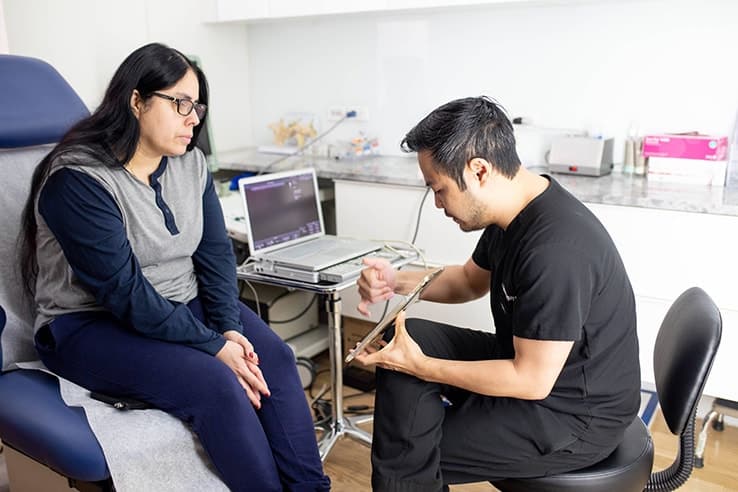
In doing so, the vein damage at the surface disappears, and the malfunctioning valve can no longer create more spider veins or varicose veins. This process is very fast with our vein experts. Most procedures are done in under 30 minutes! Click HERE to schedule vein ablation with our Harvard-trained vein doctors in New Jersey.
How Long After Ablative Vein Treatments Do You See Results?
Minimally invasive vein treatments have rapid visible results, in part because the procedures are gentler and less involved than surgery. Surgical extractions produce more swelling, wounds, scarring, and bruising, which makes it harder to see how the treated vein looks for a while. Many patients have no bruising or swelling with minimally invasive treatments, and those who do have minor symptoms.
Since we aren’t surgically removing your vein, but cauterizing it inside the body, the recovery is faster and the results start appearing within a few days. The vein begins fading from sight until it is reabsorbed by the body and no longer visible at all. Some patients with extensive vein damage might require a follow-up treatment for complete resolution, but many patients see quick results with a single procedure.
Are Results Faster with Minimally Invasive Treatment?
Minimally invasive ablation treatments are faster than vein stripping in all regards. The procedure itself is much quicker than surgery, typically taking 15-30 minutes. Patients don’t have to arrive ahead of time or stay afterward to awaken from anesthesia, like with phlebectomy. Healing and recovery are quick because the procedure is does not damage the surrounding area, unlike the multiple deep incisions involved in vein stripping surgery.
Patients can walk, and even participate in moderate exercise, right away. Since we treat the vein inside the body with devices positioned precisely on the damaged area, there isn’t much to recover from. It’s simply a matter of letting the treatment do its job. With surgery, there are wounds to heal and pain and swelling to contend with, along with a recovery period that can be lengthy depending on the extent of vein damage.
How Fast Is Recovery from Anesthesia or a Local Anesthetic?
With minimally invasive vein ablation, there is no general anesthesia. This is a tremendous advantage over traditional vein stripping surgery, since general anesthesia is costly, time-consuming, and carries certain risks. Some of our vein treatments don’t use any anesthetics. However, our thermal ablation methods, like radiofrequency ablation and endovenous laser ablation, utilize locally injected tumescent anesthesia to protect the area around the treated varicose vein from heat.
Tumescent anesthesia does not involve any recovery time whatsoever- it’s simply a buffer to the internal tissue and a tool that helps the vein collapse around the treatment device. You can get up and walk around immediately after a thermal ablation procedure. Likewise, any numbing agents we use on your skin are simply to protect against discomfort when we insert the needle, catheter, or fiber, and they don’t require a recovery period.
How Long Is the Treatment Area Swollen, Bruised, or Sore?
Many patients have no swelling, bruising, or pain. Others might have mild swelling that resolves within 24-72 hours. Bruising is minimal with our tiny instruments, and any bruises will fade in a week or two. Pain is not something our patients typically report. However, there can be a hardening sensation in the treated vein, or a bit of discomfort from the injection or the treatment. Ice, doctor-recommended painkillers (ask about non-steroidal anti-inflammatories before using), leg elevation, or wearing compression stockings might be advised to help with any swelling or discomfort.
Do You Wear Compression Stockings in the Recovery Period?
Some patients will need to wear compression stockings to help prevent blood clots and reduce swelling after treatment. The need for support stockings depends on factors like the procedure that was used, the severity of vein damage, the patient’s vasculature, and their overall health. Many patients do not need compression stockings, and those that do typically wear them for a week or less. Our NJ vein doctors select the perfect size to make sure you have comfortable yet sufficient compression for your recovery.
Is Strenuous Exercise Postponed If You Treat Varicose Veins?
Your life after minimally invasive vein ablation is full of more possibilities, not more restrictions. You will likely need to avoid strenuous exercise for a few days (moderate exercise is encouraged). Otherwise, you can enjoy all of your usual activities. You’ll experience a boost in your energy levels as circulation is restored, which will pay off when you resume strenuous workouts.
Patients with symptomatic varicose veins will finally be free from leg pain, leg swelling, cramping, heaviness, restlessness, and itchiness in their legs. Those who had severe venous insufficiency will no longer struggle with venous ulcerations, hyperpigmentation, venous stasis dermatitis, and all of the unpleasant symptoms of vein disease.
When Should You Treat Varicose Veins for Best Results?
Like most medical conditions, the earlier you treat varicose veins and vein disease, the better the outcome. However, our advanced techniques relieve even the most significant, long-standing vein issues. In order to prevent complications like venous ulcerations, blood clots, or profuse bleeding, see a vein doctor promptly for varicose veins. In addition, your self-confidence will improve when vein damage is no longer visible, so, why wait to feel better about yourself? Patients always remark that they wish they’d received our vein treatments sooner. So, don’t delay. Visit one of our premier New Jersey vein centers today!
